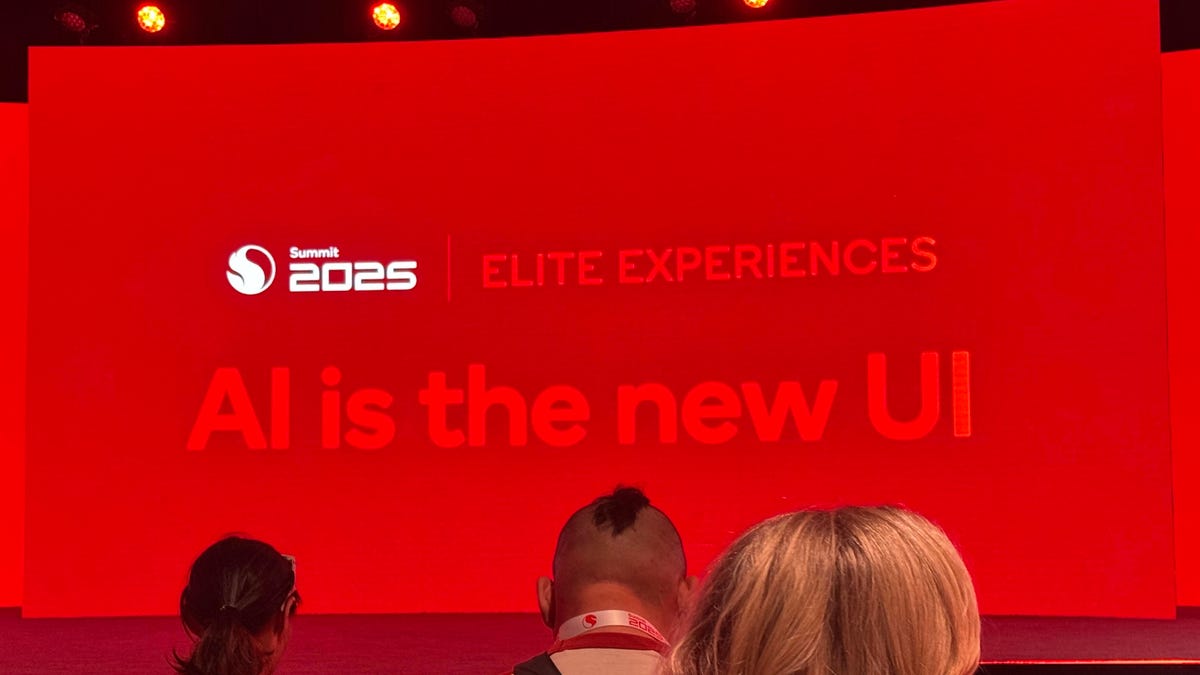Qualcomm Rolls Out Snapdragon Chips Aimed at Enabling AI Agents Across Devices

Key Points
- Qualcomm unveiled Snapdragon 8 Elite Gen 5 for phones, processing up to 220 tokens per second.
- Snapdragon X2 Elite and X2 Elite Extreme for PCs deliver about 80 TOPS, nearly double previous models.
- New Oryon CPU architecture replaces Kryo cores, boosting CPU performance by roughly 37%.
- On‑device AI agents will use lower‑parameter integer models on phones; PCs will rely on larger cloud models.
- Humain showcased a prototype AI‑agent laptop with a central prompt interface at the summit.
- Executives stress reduced latency is critical to keeping users engaged with AI assistants.
Qualcomm announced a new generation of Snapdragon processors at its Snapdragon Summit, positioning the chips as the hardware foundation for AI agents on smartphones and PCs. The Snapdragon 8 Elite Gen 5 and the Snapdragon X2 Elite family promise dramatically higher token‑processing speeds, increased TOPS performance, and on‑device large language model support. Executives Durga Malladi, Vinesh Sukumar, and CEO Cristiano Amon highlighted how the upgrades could make AI assistants faster, more reliable, and capable of accessing personal data locally. The company also showcased a prototype PC from Humain that uses a prompt‑driven AI interface, illustrating the shift toward agent‑centric user experiences.
Snapdragon Summit Highlights New Chip Capabilities
At the Snapdragon Summit, Qualcomm introduced its latest mobile and PC processors, emphasizing their role in delivering AI agents that can operate directly on devices. The Snapdragon 8 Elite Gen 5 chip for smartphones can handle up to 220 tokens per second, a substantial increase from the previous generation’s 15‑token rate. This speed boost reduces latency, keeping interactions fluid and preventing user disengagement.
For PCs, Qualcomm unveiled the Snapdragon X2 Elite and X2 Elite Extreme chips. Both achieve roughly 80 trillion operations per second (TOPS), nearly double the 45 TOPS of the earlier X Elite models. The higher TOPS and improved CPU performance – cited as a 37% gain – are intended to support more sophisticated on‑device AI workloads.
Hardware Advances Target AI Agent Performance
The new chips incorporate Qualcomm’s Oryon CPU architecture, which replaces the earlier Arm‑based Kryo cores. This shift, along with enhanced graphics and neural processing units, is designed to enable “always‑on” AI capabilities that can search across apps, personal files, and cloud services to answer user queries. Executives said the hardware improvements remove the previous roadblock that limited the deployment of AI‑agent experiences on mobile and desktop platforms.
Durga Malladi, Qualcomm’s AI chief, explained that the combination of faster token processing and higher TOPS will let AI agents retrieve and synthesize information more quickly, making the interaction feel natural. Vinesh Sukumar, senior director of AI product management, added that latency beyond one second can cause users to lose interest, underscoring the importance of the token‑per‑second gains.
On‑Device vs. Cloud‑Based Models
Qualcomm distinguished between the constraints of mobile and PC environments. On smartphones, power and thermal limits mean AI agents will rely on integer‑based, lower‑parameter language models (typically in the single‑digit‑billion‑parameter range). These models run locally, preserving privacy and reducing reliance on constant network connectivity.
Conversely, PC‑based agents are expected to tap into larger, cloud‑hosted models that use floating‑point processing. This approach is suited for enterprise tasks such as code generation, where higher precision and larger context windows are beneficial.
Demo of an AI‑Agent PC Interface
Following the chip announcements, Qualcomm’s CEO Cristiano Amon toured a prototype laptop from Humain that showcases an AI‑agent interface. The system presents a central prompt window with predefined templates ranging from specific tasks like stock advice to open‑ended queries. While the interface resembles familiar generative‑AI chat boxes, it embodies Qualcomm’s vision of a unified agent that can navigate across applications and data sources on behalf of the user.
Both Qualcomm and Humain view this prototype as a step toward familiarizing consumers with agent‑forward workflows, encouraging a shift from manually hunting for information to simply asking an AI assistant.
Outlook and Market Impact
Qualcomm’s leadership expressed confidence that the new Snapdragon family removes the primary hardware barrier to widespread AI‑agent adoption. With the chips now able to support faster, more capable models, the onus shifts to device manufacturers and software developers to integrate agent‑centric experiences. While the exact form of future AI agents remains fluid, the company believes the “starting gun” has been fired, and users will soon encounter AI assistants that streamline routine tasks, enhance productivity, and provide personalized assistance across both mobile and desktop environments.